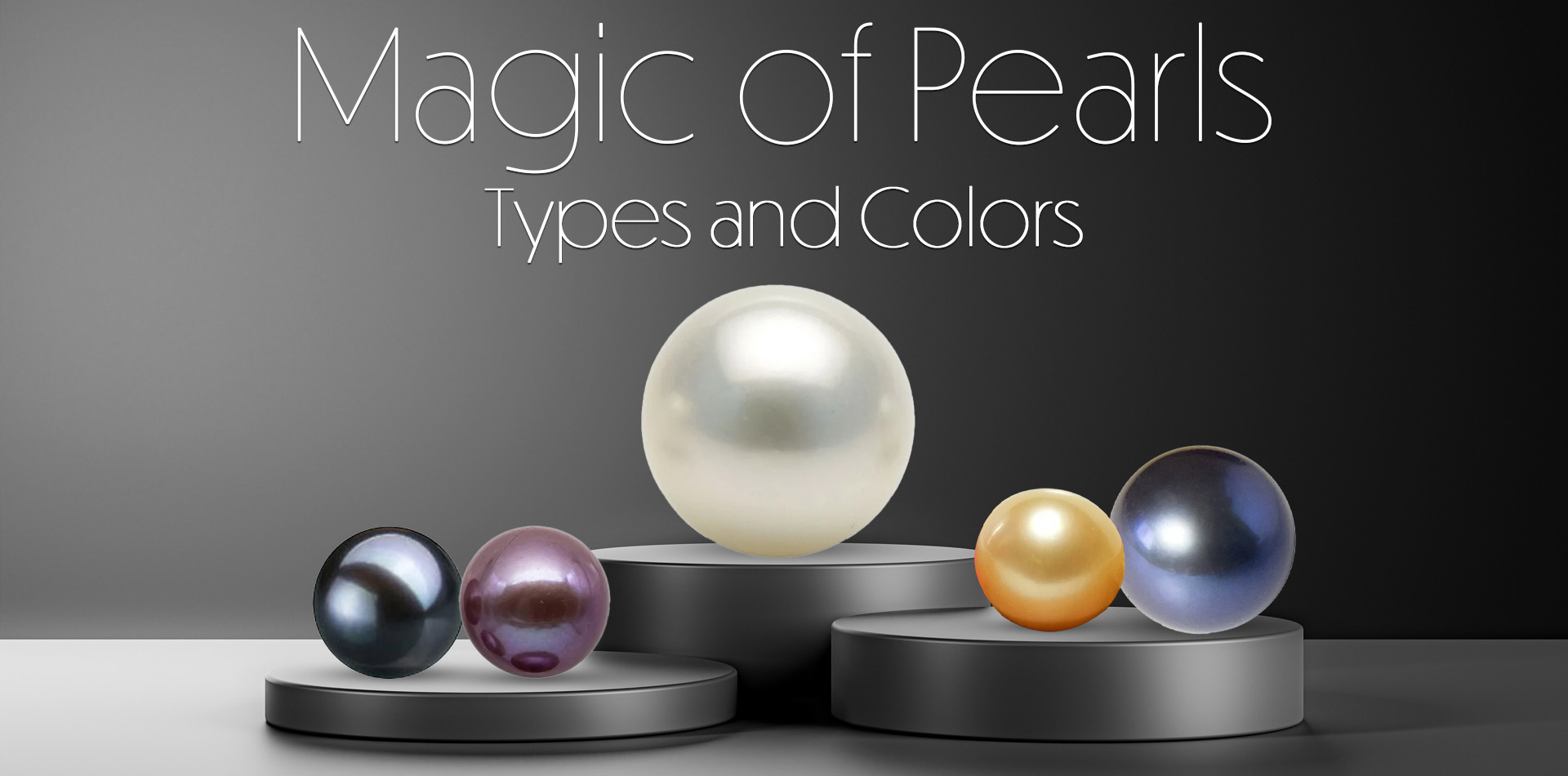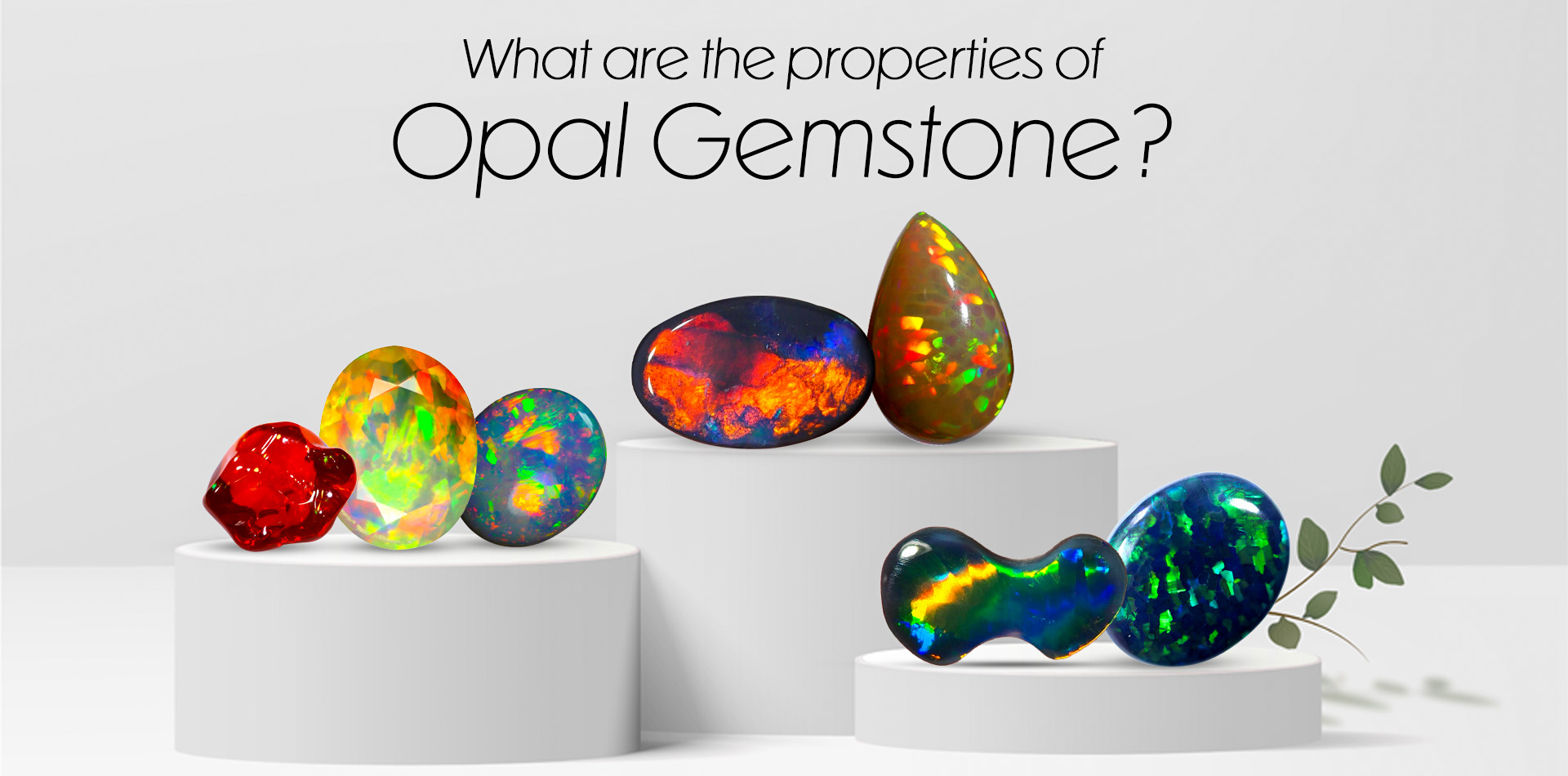Magic Of Pearls - Types And Colors

A gem that has intrigued and impressed humanity for centuries, pearls denote elegance, simplicity, and prestige. These ethereal pearls that have been created over time within the body of a living shelled mollusk are the realization of great biological detail.
However, they are available in numerous types and colors, so everyone can find something that they will enjoy using. The creation of this article is aimed at acquainting the reader with the various types of pearls, their color range, and the little-known Keshi pearls.
Understanding Pearl Stone: Natural Vs Cultured
All types of pearls come under one of the two umbrellas: Natural or Cultured
Natural pearls are formed without any interference from humans while cultured pearls are formed with the help of humans. A mollusk produces a nacre that forms a coat on the spoilers like a parasite with layers of what is a combination of aragonite and conchiolin to produce a pearl. These pearl gemstones are some of the rarest that are known to man and therefore, reasonably valuable.
Another type of pearl stone is cultured pearls which are made with human assistance. For the process, a small bead or a piece of tissue is put into the mollusk to create a nacre. Cultured pearls are more frequently found than natural pearls and are less expensive but still have top-notch quality and may also fetch high prices.

Types Of Pearls
Here are the notable types of pearls
1) Akoya Pearls:
Akoya pearls are cultured pearls produced from salt water, mostly in Japan and China. Akoya pearls can vary in size from as small as 2mm and extend up to 10mm.
In terms of color, the Akoya is known for its white or cream luster with a slight hint of rose or silver. Because their luster is so highly developed, cultured pearls are used exclusively in pearl jewelry of a classic type, for instance, necklaces and earrings.
2) South Sea Pearls:
South Sea pearls are larger and esteemed more than all the other pearl stone varieties having sizes of 9mm-20mm. Originally sourced from Australia, Indonesia, and the Philippines, these are Pearls of the white-lipped and gold-lipped Pinctada maxima oysters.
South Sea is a type of pearl stone that is known for its satin-like luster, as well as the thickness of the nacre. They are mainly associated with white, silver, and gold colors; with golden ones being the most valuable.
3) Tahitian Pearls
Cultured Tahitian pearls, also known as “black pearls”, are produced in French Polynesia. As their name suggests these pearls are not entirely black but they are extremely dark with colors ranging from peacock green to aubergine and deep blue.
They are gathered from the black-lipped Pinctada margaritifera oyster and are normally between 2. 5mm and 4. 5mm in diameter. Tahitian pearls have a reputation for exotic colors and naturally sleek luster.
4) Freshwater Pearls
Most of the freshwater pearls are sourced from China, although they can be cultured in freshwater mussels. These are found in various shapes and sizes but are usually between 2mm and 16mm in length.
Cultured Freshwater pearls are relatively cheap since the same mussel can produce several pearls at once. They come in several natural shades such as white, peach, pink, and lavender. Modernization of the ways of culture has led to increased quality of cultured freshwater pearls in the recent past.
5) Keshi Pearls
Keshi pearls are considered a rather interesting and accidental result of the pearl farming technique. The term “Keshi” is a Japanese term for “Poppyseed” about their typically small size.
But still, Keshi pearls can significantly differ in size, being even tens of centimeters. While other pearls may be classical, Keshi pearl stones do not possess a nucleus on which they are formed. They are completely made of nacre, which gives them a unique and lustrous appearance. Keshi pearls can be saltwater and cultured freshwater pearls and depending on the kind of oyster or mussel, can be produced in various colors.

The Spectrum Of Colors Of Pearl
One of the most revered characteristics of pearls is the variety of hues that they come in, from plain white to black. The types of pearls concerning colors depend on the type of mollusk, the habitat it occupies, and the kind of irritant used to induce nacre formation.
1. White And Cream Pearls
Some of the most natural and traditional types of pearls are those that are white and cream. Akoya, South Sea, and freshwater pearls may have these colors. White pearls are associated with purity and sophistication, and that is why they are used for occasional and formal jewelry. Combining these light-shaded stones with the purple Amethyst can create a pretty contrast that increases the beauty of the pearls.
2. Golden Pearls
Gold pearls, especially the South Sea pearls, have a rich warm color that is preferred in the market. These pearls can come in shades of light champagne to deep gold coloring. The depth of the color is dependent on the amount of gold present in a pearl, and the deeper gold color is usually considered more valuable.
3) Black And Dark Pearls
These pearls are famous for their dark color which is a feature of Tahitian pearls. These range from the opaque black to the opaque gray though they have an overtone of green, blue, purple, and pink thus referred to as peacock pearls. Black with vibrant overtones are also cultured but are more commonly dyed to some degree and do not have the same luster of a genuine Tahitian pearl.
4) Pink Lavender Pearls
As has already been mentioned, cultured freshwater pearls can be as tender as blush pink, peach, or lavender. These colors are most of the time natural and their density also varies as well. It is for this reason that pink and lavender pearls are some of the most demanded due to their pretty and feminine looks.
5) Blue Pearls
Blue pearls are not all that common and for this reason, people consider them as valuable. These pearl stones can be enlisted in Akoya and Tahitian varieties and are available in shades of blue that range from pale blue to black. White pearls may also have this blue overtone to them which makes them appear distinctively.

Conclusion
Pearl stones, in their various types and hues, can mesmerize jewelry enthusiasts and collectors. From the sophistication of Akoya to the otherworldly charm of Tahitian and the rich opulence of South Sea pearls, different categories offer different attributes.
On one hand, cultured freshwater pearls are still very affordable and multifunctional; Keshi pearls are valued for their brilliant luster and natural look.
Whether they grow naturally or are bred with the help of people, pearls still embody the spirit of sophistication. The significance of the different colors, ranging from white to black or any in between proves that there is a pearl stone for every season, occasion, and color preference.
In the context of the various types of gemstones pearls remain unique as they are associated with the sea and the mystery of the world hidden deep in the ocean. Want to add the most distinct and unique pearls to your collection? We have got you covered with CabochonsForSale, fine rich, and beautiful pearls at reasonable prices.
FAQS
1. What Color Is Best For Pearls?
The most widely preferred and most classic color for the pearls, natural or cultures is white or the various shares like cream and milky white. It is often associated with occasional and formal wear, like weddings, graduation, etc.
2. What Is The Rarest Color Of Pearl?
The rarest pearl is blue. Either they are naturally grown or lab-created. The ones grown naturally are extremely valuable and prized.
3. What Color Of Pearl Is The Most Expensive?
Currently, the most expensive pearls in the market are the South Sea pearls. They occur in the colors white and gold.








